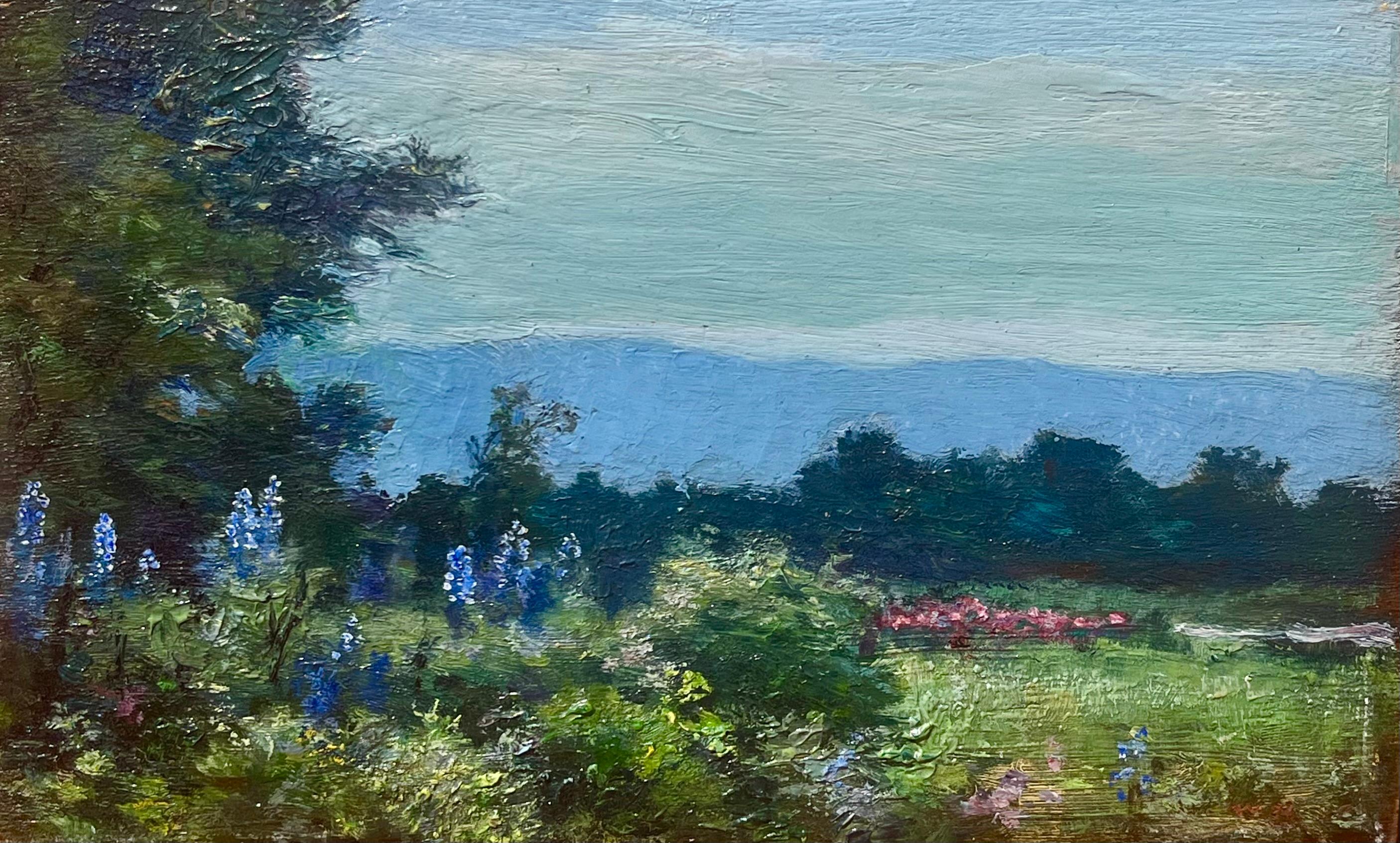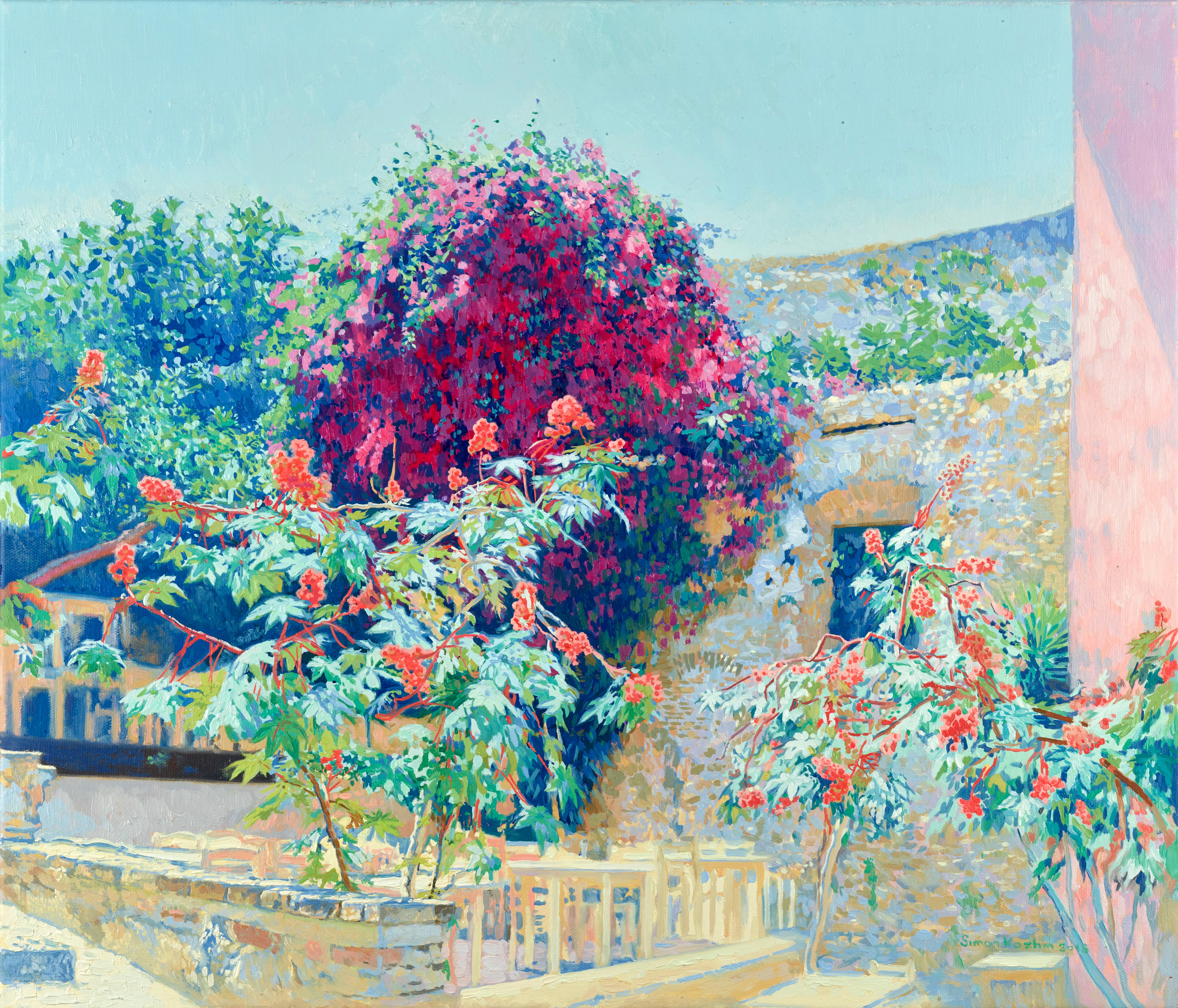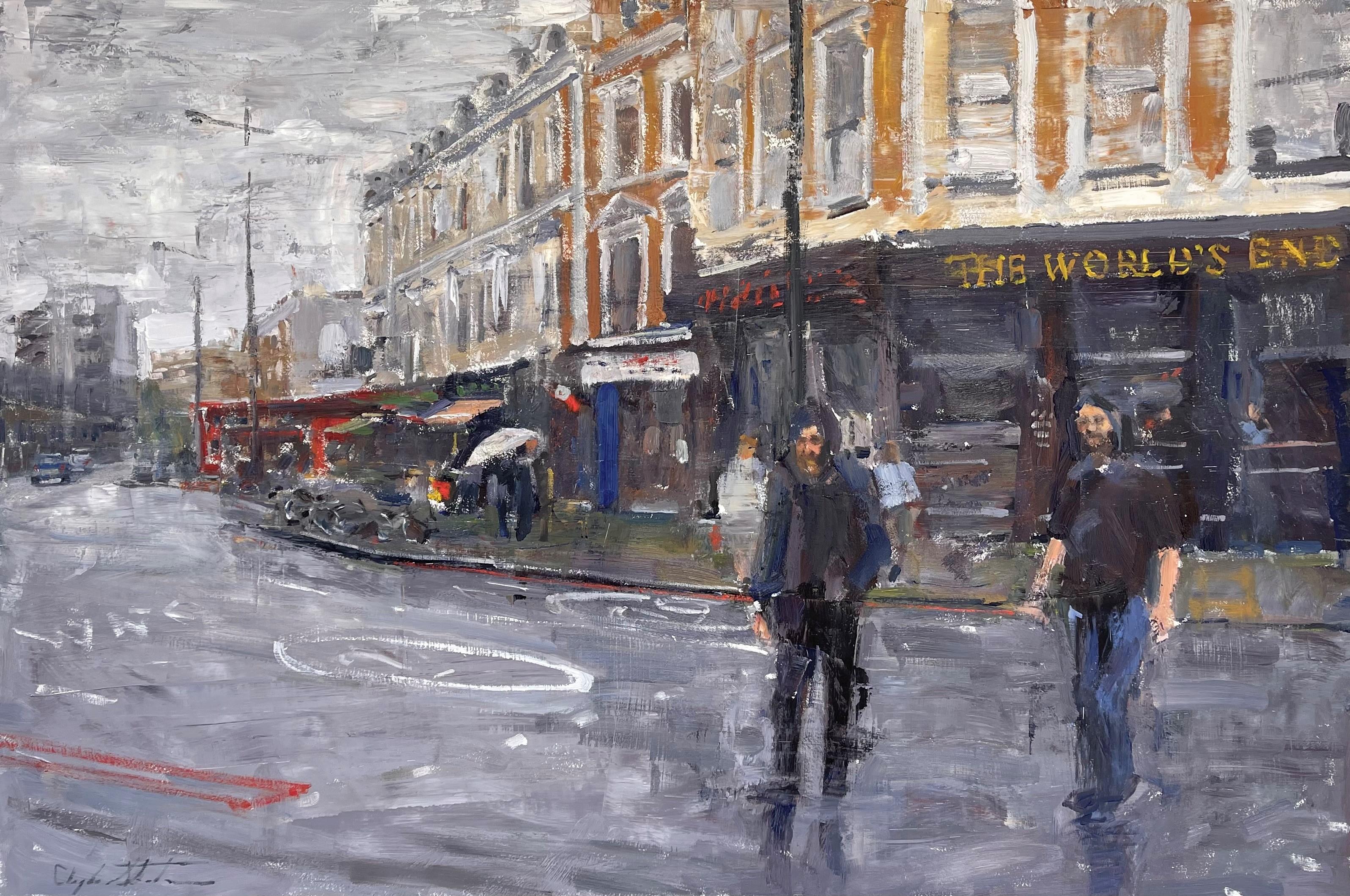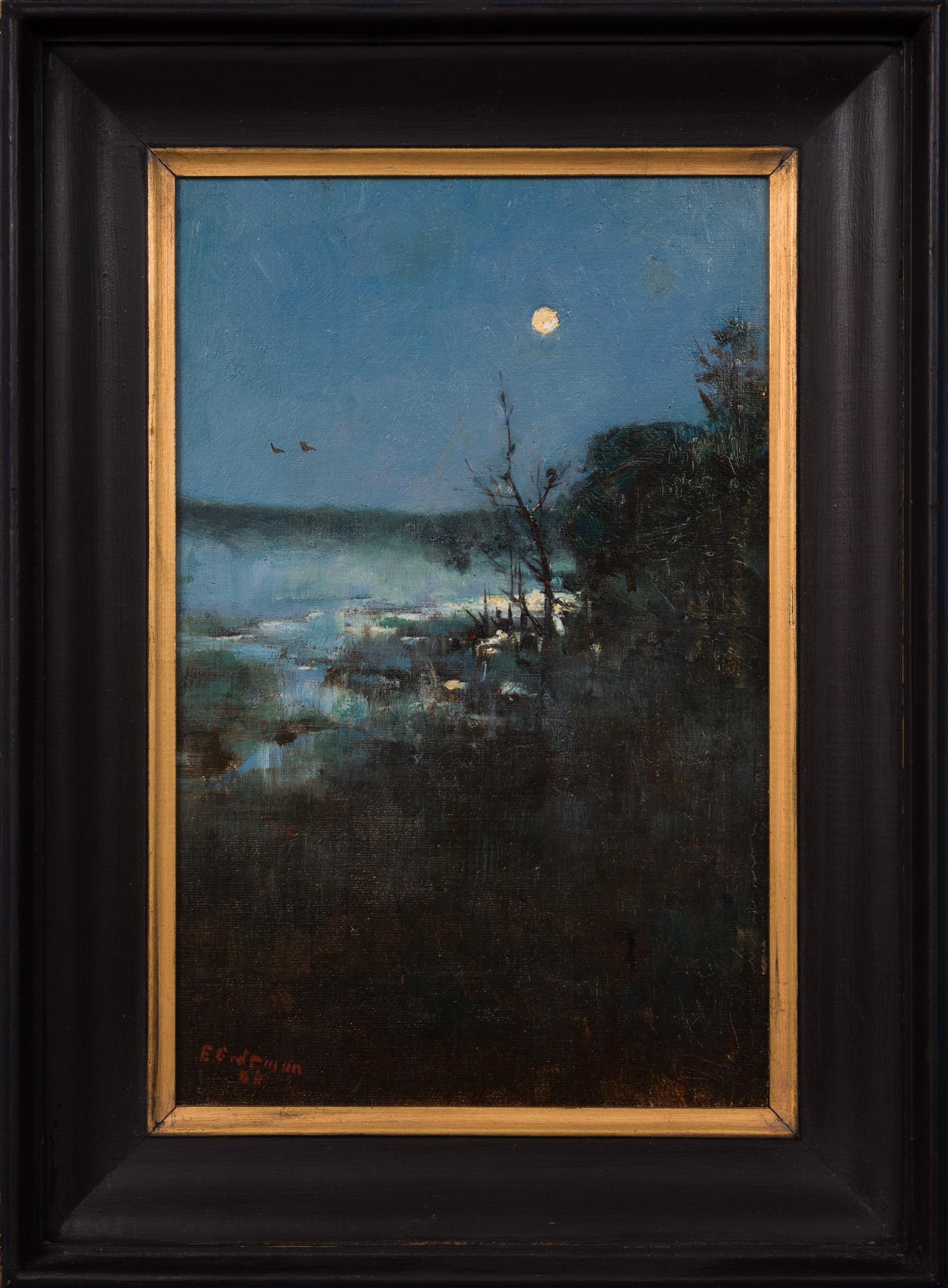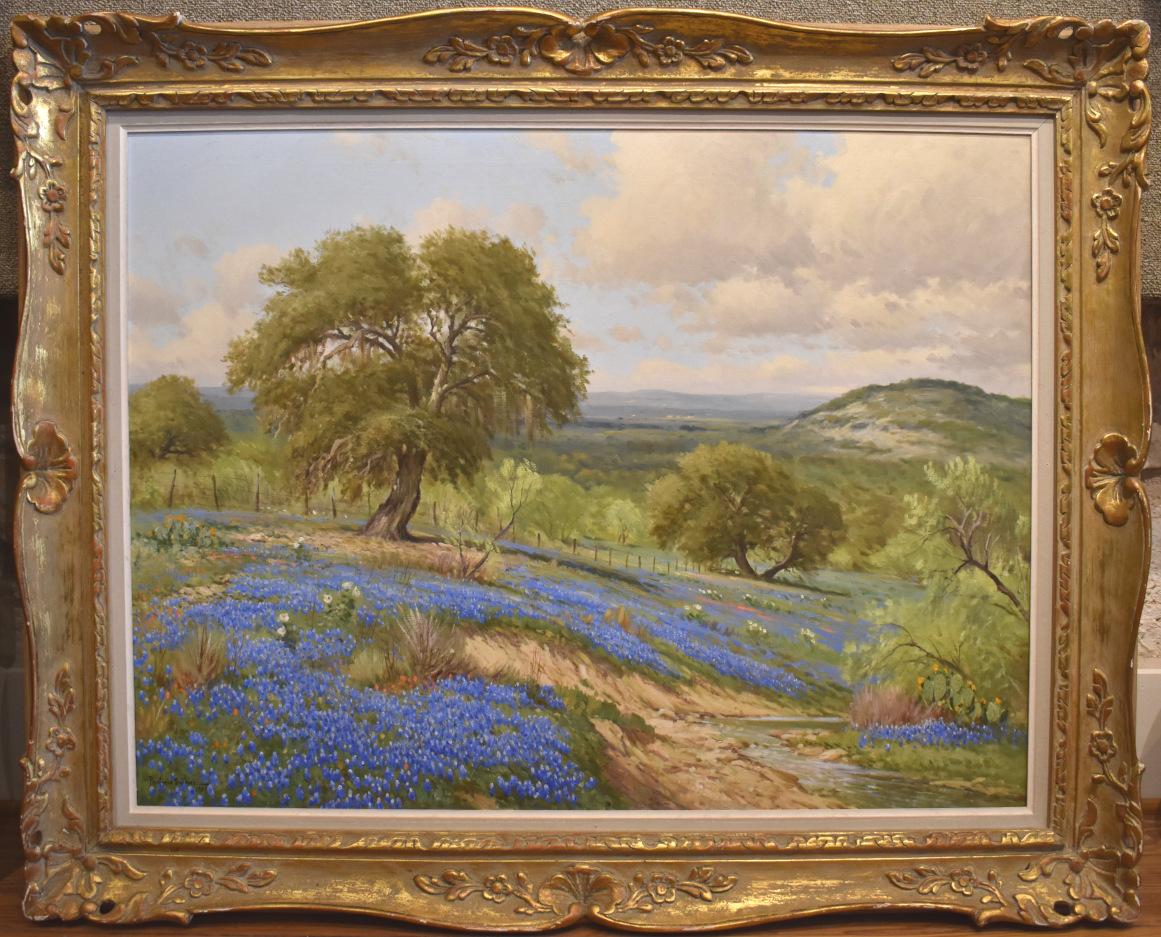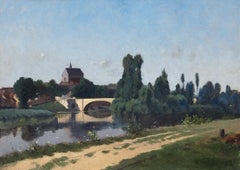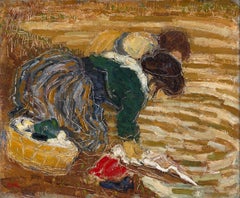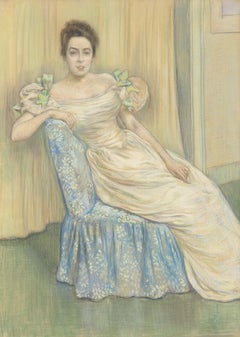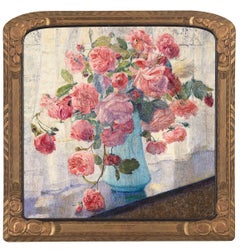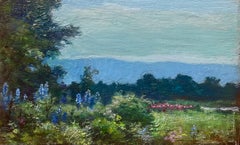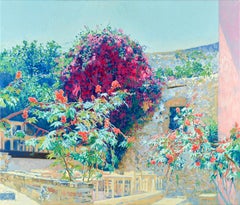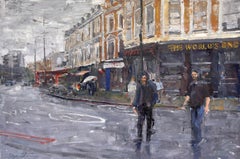Items Similar to Soleil couchant à Veere, 1906
Want more images or videos?
Request additional images or videos from the seller
1 of 9
Theo van RysselbergheSoleil couchant à Veere, 19061906
1906
About the Item
Theo Van Rysselberghe
Gent 1862-1926 Saint-Clair, Var
Soleil couchant à Veere, 1906
Ondergaande zon te Veere
Oil on canvas
60 x 73 cm.
Signed and dated: lower left with monogram ‘06’
Provenance: Private collection, Belgium; Sotheby’s, New York, auct. 12 November 1988, cat. no. 326; Hammer Gallery, auct. 1 February 1986; private collection, Israel; Campo, Antwerp, October 1978; Campo, Antwerp, 17 October 1977; Palais Galliéra, Paris, auct. 6 December 1975, cat. no. 124; Palais Galliéra, Paris, auct. 25 may 1975; Me Loudmer, Palais Galliéra, Paris, auct. 25 May 1971, cat. no. 63; Galerie Bernheim-Jeune, Paris, auct. 18 April 1914; Galerie Druet, Paris 1910.
Literature; R. Feltkamp, Théo van Rysselberghe. Schilder van de zon, Laren, Singer museum, 2022, p. 50; R. Feltkamp, Théo Van Rysselberghe: l'instant sublimé, Musée Lodève, 2012, p. 24-25; R. Feltkamp, Théo van Rysselberghe: catalogue raisonné, 2003, p. 361, no. 1906-033.
Exhibited: Paris, Bernheim Jeune, Théo van Rysselberghe, 1908; Rotterdam, Rotterdamse Kunstkring, Théo van Rysselberghe, cat. 39; Groningen, Galerie Hofsteenge, Pictura Théo van Rysselberghe, 16 January -2 February 1910, cat. no. 34; Paris, galerie Bernheim-Jeune, La Faune, cat. no. 37; Paris, galerie Bernheim - Jeune, L’eau, cat. no. 46; New York, Hammer Galleries: European and American Collections, January - February 1986; Laren, Singer museum, Théo van Rysselberghe. Schilder van de zon, 17 May – 4 September 2022.
- Creator:Theo van Rysselberghe (1862-1926, Belgian)
- Creation Year:1906
- Dimensions:Height: 32.29 in (82 cm)Width: 37.41 in (95 cm)Depth: 3.94 in (10 cm)
- Medium:
- Movement & Style:
- Period:
- Condition:
- Gallery Location:BLARICUM, NL
- Reference Number:1stDibs: LU2625212929262
Theo van Rysselberghe
Théophile "Théo" van Rysselberghe (23 November 1862 – 13 December 1926) was a Belgian neoimpressionist painter, who played a pivotal role in the European art scene at the turn of the twentieth century.
About the Seller
No Reviews Yet
Vetted Professional Seller
Every seller passes strict standards for authenticity and reliability
1stDibs seller since 2023
- ShippingRetrieving quote...Shipping from: BLARICUM, Netherlands
- Return Policy
Authenticity Guarantee
In the unlikely event there’s an issue with an item’s authenticity, contact us within 1 year for a full refund. DetailsMoney-Back Guarantee
If your item is not as described, is damaged in transit, or does not arrive, contact us within 7 days for a full refund. Details24-Hour Cancellation
You have a 24-hour grace period in which to reconsider your purchase, with no questions asked.Vetted Professional Sellers
Our world-class sellers must adhere to strict standards for service and quality, maintaining the integrity of our listings.Price-Match Guarantee
If you find that a seller listed the same item for a lower price elsewhere, we’ll match it.Trusted Global Delivery
Our best-in-class carrier network provides specialized shipping options worldwide, including custom delivery.More From This Seller
View AllFrench village
By Louis Bouché
Located in BLARICUM, NL
LOUIS ALEXANDRE BOUCHÉ
Luzancy 1938-1911
French village, 1886
Oil on canvas
33 x 46 cm.
Signed: lower right ‘Louis Bouché’.
Provenance: Barbizon – realist and French landscape pai...
Category
19th Century Barbizon School Landscape Paintings
Materials
Oil
Lavandaie, ca 1905
Located in BLARICUM, NL
OTTO VAN REES
Freiburg im Breisgau 1884-1957 Utrecht
WASSENDE VROUWEN I LAVANDAIE
1905
Oil on canvas
43 x 52 cm.
Signed: lower left ‘OvR’
Particularities: ID 35.
Provenance: Pri...
Category
Early 1900s Impressionist Figurative Paintings
Materials
Oil
Les ruban verts, 1897
By Theo van Rysselberghe
Located in BLARICUM, NL
THEO VAN RYSSELBERGHE
Gent 1862-1926 Saint-Clair, Var
LES RUBANS VERTS
Portrait of Marquerite Mommen-Ithiers
1897
Pastel on paper
90 x 65 cm.
Signed and dated: lower right with mo...
Category
1890s Impressionist Figurative Drawings and Watercolors
Materials
Pastel
Still-life with roses
Located in BLARICUM, NL
ADELIN VERLY
Brussels 1883-1967
STILL LIFE WITH ROSES
Triplex
54 x 54 cm.
Signed: lower right 'Adelin Verly'
Provenance: Private collection, The Ne...
Category
Early 20th Century Dutch School Still-life Paintings
Materials
Oil
Portrait of a fisherman, Volendam
Located in BLARICUM, NL
WILLEM VAN DE BERG
Den Haag 1886-1970 Amsterdam
Portrait of a fisherman, Volendam
1940
Oil on canvas
70 x 55 cm.
Signed and dated: lower left ‘Willem van den Berg...
Category
1940s Figurative Paintings
Materials
Oil
Blossom branche
By Lodewyk Bruckman
Located in BLARICUM, NL
LODEWIJK BRUCKMAN
Den Haag 1903-1995 Leeuwarden
BLOSSOM BRANCHE,
1946
Oil on canvas
41 x 41 cm.
Signed and dated: lower left
Category
1940s Still-life Paintings
Materials
Oil
You May Also Like
Field of Spring Blooms
By Whitney Myron Hubbard
Located in Fredericksburg, VA
Whitney Myron Hubbard's "Field of Spring Blooms" is a delightful impressionist painting that captures the vibrant beauty and joyous spirit of springtime. This enchanting artwork imme...
Category
Early 20th Century American Impressionist Landscape Paintings
Materials
Oil, Board
Summer Field, Landscape, Original oil Painting, Ready to Hang, Impressionism
By Vahe Yeremyan
Located in Granada Hills, CA
Artist: Vahe Yeremyan
Work: Original Oil Painting, Handmade Artwork, One of a Kind
Medium: Oil on Linen
Year: 2024
Style: Impressionism,
Title: Summer Field,
Size: 45" x 30" x 1''...
Category
2010s Impressionist Landscape Paintings
Materials
Canvas, Linen, Oil
Summer cafe in Kerkyra
By Simon Kozhin
Located in Zofingen, AG
Walking around the old city of Kerkyra, I saw a bright spot that attracted me and completely grabbed my attention since the variety of shades and colors, the richness of reflexes in ...
Category
2010s Impressionist Landscape Paintings
Materials
Canvas, Oil
"Crossing Over" (2023) by Clyde Steadman, Original Cityscape Oil Painting
Located in Denver, CO
"Crossing Over" by Clyde Steadman (United States) is a handmade cityscape painting that is unframed, but ready to hang.
Category
21st Century and Contemporary Impressionist Figurative Paintings
Materials
Oil
Moonlit Reflections, Heyst-sur-Mer. Painted 1884
By Elias Erdtman
Located in Stockholm, SE
Elias Erdtman (Sweden, 1863–1945)
Moonlit Reflections, Heyst-sur-Mer
oil on canvas laid on board
signed E. Erdman och daterad -84
unframed: 29 x 18.5 cm (11.4 x 7.3 inches)
framed:...
Category
1880s Impressionist Landscape Paintings
Materials
Canvas, Oil, Board
"Bluebonnet Creek" Texas Hill Country 1957 39 x 49 Framed!!!
By Porfirio Salinas
Located in San Antonio, TX
Porfirio Salinas
(1910-1973)
San Antonio Artist
Image Size: 30 x 40
Frame Size: 39 x 49
Medium: Oil on Canvas
Dated 1957
"Bluebonnet Creek" Texas Hill Country
Biography
Porfirio Salinas (1910-1973)
Porfirio Salinas was a self-taught artist who painted landscapes of Central Texas with an emphasis on the vast bluebonnet fields that grow there in the springtime. Born in 1910 in Bastrop, Texas, he attended public schools in San Antonio. He also observed works in progress by the director of the San Antonio Art School, Jose Arpa, as well as landscape painter, Robert Wood. Wood is said to have paid Salinas five dollars a picture to paint bluebonnets because "he hated to paint bluebonnets". Salinas served in the military from 1943 to 1945. Although he was assigned to Fort Sam Houston, he was allowed to live at home. At the fort, Colonel Telesphor Gottchalk assigned him to paint murals for the officer's lounge and various other projects, and Salinas continued to be able to paint during his entire conscripted period. Even before he achieved notoriety among galleries, dealers, and museums, Salinas was widely followed and appreciated by many Texans, including former President Lyndon B. Johnson, who may be considered responsible for launching Salinas popularity beyond the boundaries of Texas. In 1973, Texas capital, Austin, honored Salinas for having "done much to bring the culture of Mexico and Texas closer together with his paintings". Salinas died in April 1973 in San Antonio, Texas.
From
the years of the Great Depression through President Lyndon Johnson's
Great Society of the 1960s, Texan Porfirio Salinas (1910-1973) remained
one of the Lone Star State's most popular artists. Today, his works
remain popular with Texas collectors and those who love landscapes of
the beautiful "Hill Country" that lies in the center of the
state. One of the first Mexican American painters to become
widely recognized for his art, Salinas was a favorite of President
Lyndon Johnson and his wife, Lady Bird Johnson, as well as of Sam
Rayburn, the longest-serving Speaker of the House of Representatives,
and Texas Governor John Connelly. In fact, President Johnson was so
enamored with his Salinas paintings that the artist will forever be
associated with America's first Texas-born President. Works by Porfirio
Salinas are in a number of museum collections, grace the halls of the
Texas State Capitol and the Governor's Mansion in Austin, and are
included in virtually every major private collection of Early Texas Art.
Porfirio
Salinas was born on November 6, 1910, near the small town of Bastrop,
Texas, about thirty miles from Austin. His father, Porfirio G. Salinas
(1881-1967), and his mother, Clara G. Chavez, struggled to make a
hardscrabble living as tenant farmers, but eventually were forced to
give up farming. The family moved to San Antonio, where Salinas' father
was able to get a job working as a laborer for the railroad, but the
scenic area around Bastrop, with its pine trees and the wide expanse of
the Rio Grande River, would forever remain a touchstone for the artist.
For the rest of his life, Salinas and his brothers went back frequently
to visit their grandmother in her little farmhouse. When in Bastrop,
Porfirio painted on the banks of the Rio Grande or in the groves of
pine trees. The Salinas family was close-knit and Porfirio was the
middle child of five children, so he had an older brother and sister as
well as a younger brother and sister. His mother was a native of
Mexico, so throughout his childhood the family made the long drive to
Mexico to visit Clara Salinas' family.
As a child growing up in
the bi-lingual section of San Antonio, Salinas drew and painted
incessantly and by the time he was ten, he was already producing work
that was mature enough to sell to his schoolteachers. Many years later
in an article in the New York Times he was described as a "boy whose
textbooks were seldom opened and whose sketchbook was never closed."
Instead of studying, the young artist spent his spare time watching
artists paint in and around San Antonio. As an aspiring painter,
Salinas was fortunate to grow up in the historic city, which had the
most active art scene in Texas. It was his exposure to older,
professional painters that encouraged the precocious young painter to
leave school early in order to help his family and pursue a career as a
professional artist, despite his father's inability to see art as a
career with any future for his son.
When Salinas was about
fifteen he came to know the artist Robert W. Wood (1889-1979). He met
Wood while he was employed in an art supply store and he soon began to
work as an assistant to the English-born painter, who had moved from
Portland to San Antonio in 1924. Although the diminutive Englishman was
already an established professional artist, he did not have a great
deal of formal art training and so he was then studying with the
academically trained Spanish painter Jose Arpa (1858-1952) in order to
augment his knowledge and give his work a more polished look. Salinas
was an eager young man, and while working in Wood's downtown San
Antonio studio he learned to stretch canvases, frame paintings and to
sketch in larger compositions from small plein-air studies for the
English artist. He began to accompany Wood and Arpa to the hills
outside San Antonio, where they painted small Plein-air studies of
fields of blue lupin - the state flower, the famous "Bluebonnets" of
Texas - in the springtime and scenes of the gnarled Red Oaks as they
changed color in the fall. He was soon assisting Wood in the tedious
work of painting the tiny blue flowers that collectors wanted to see in
the landscapes they purchased of central Texas. According to a
1972 newspaper story, "Legend has it that one day in the 1920s artist
Robert Wood decided he could not bear to paint another bluebonnet in
one of his landscapes. He hired young Porfirio Salinas to paint
them in for him at five dollars a painting." Whether this story is
accurate or apocryphal isn't clear, but the ambitious and independent
young Salinas wasn't destined to be anyone's assistant for very long.
The
formative event of Porfirio Salinas' teenage years was the Texas
Wildflower Competitive Exhibitions, a Roaring-Twenties dream of the
eccentric oilman Edgar B. Davis (1873-1951). These competitive shows of
paintings of wildflowers and Texas life were mounted in San Antonio
from 1927 to 1929. Held at the newly opened Witte Museum each spring,
the exhibition featured large cash prizes donated by the philanthropic
Davis, which were an inducement for artists to travel from all over the
United States to paint in the Hill Country of Texas. The "Davis
Competitions," as they were known, helped to cement San Antonio's
reputation as an art center, a legacy that remains with the "River
City" today. The shows generated a great deal of excitement in the
area, helping to make celebrities of the some of the artists who had
already settled there and encouraging others to make San Antonio their
home. Over the three years that the wildflower competitions were held,
more than 300 paintings were exhibited, and many thousands of viewers
saw the paintings at the Witte Museum and on tours throughout the state
and in New York. Each year Davis would generously purchase the winning
paintings and then donate them to the San Antonio Art League. Young
Porfirio Salinas would have been able to not only watch his two mentors
- Robert W. Wood and Jose Arpa - paint the works that they entered in
the Davis Competitions, he would have been able to see Arpa take
several of the major prizes, receiving the judge's accolades for
"Verbena," "Cactus Flower" and "Picking Cotton," works that are still
on view at the San Antonio Art League Museum today. Unfortunately,
Davis eventually put his donations to work in other charitable
endeavors, bringing to an end the wildflower events, but only after
they inspired Salinas and other young painters and had helped to make
wildflower paintings the most sought-after subject for traditionalist
Texas collectors.
In 1930, when he was only twenty, Salinas
hung out a shingle and began to paint professionally, augmenting the
sales of his easel paintings with what little business he could garner
by painting signs for local concerns. It was a struggle for the young
artist to make a living, as the effects of the Great Depression were
settling in. His early works are very similar to those of Robert
Wood's, both in subject matter and treatment. Salinas did small
paintings of Bluebonnets for the tourists who visited San Antonio to
see the famous Alamo as well as paintings of the Texas missions...
Category
1950s Impressionist Landscape Paintings
Materials
Oil
Recently Viewed
View AllMore Ways To Browse
Antique Cat Collection
Antique Framing Hammer
Palais Galliera
Soleil Europe
Cat Oil Painting 1900
Midnight Sun
Oil Painting By J Law
Victoria Watches
20 X 30 Antique Frame
Alexandre C
Antique Paintings Of Architectural School
California Cypress
Courbet Oil
Eagle Oil Painting
England Sheep
Impressionist Painting Thames
Ingram Art
Large Southwestern Painting
